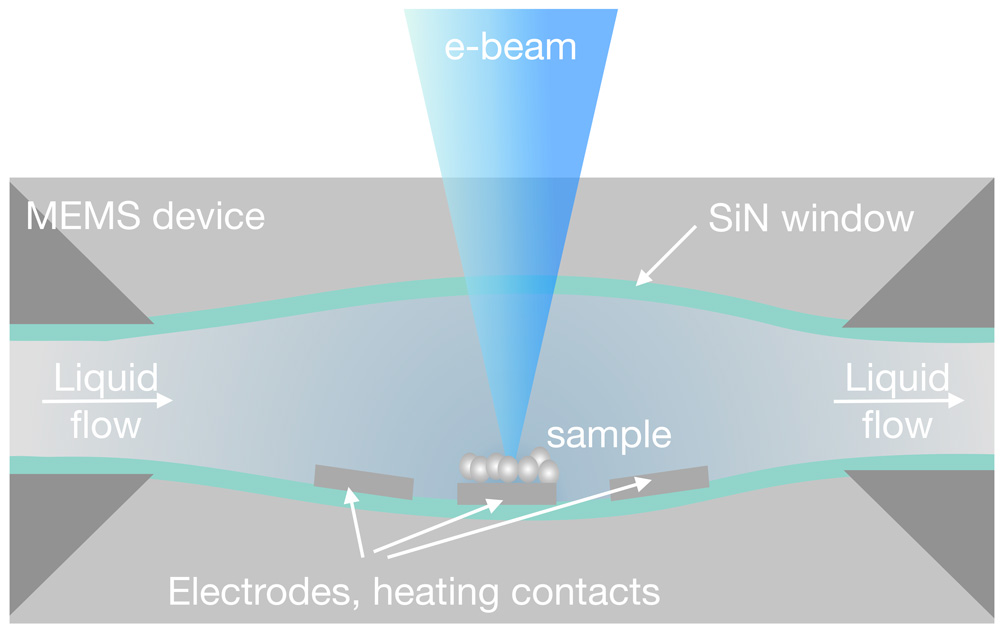Method Specification
Recent advances in fabrication of MEMS devices have renewed interest to reveal dynamic processes in materials with high spatial and temporal resolution in the TEM. Transformations in liquid and gaseous environment, upon heating or biasing, enable for instance the investigation of structural transformations on catalytic surfaces in gases or electrochemically induced transformations of battery electrodes during charging cycles.
Dedicated in situ TEM holders introduce extremely demanding technical challenges. SiN window cells, elegantly confine the specimen from vacuum. Practical challenges are related to the reproducibility and data interpretation is still limited predominately due to the strong interaction of the electron beam with the supporting electrolyte and electrode material.

Figure: Schematic of a liquid cell experiment setup. Liquid and sample are confined between silicon chips with patterned SiN windows that are transmissive for electrons.
Further reading
Ross, F. (Ed.). (2016). Liquid Cell Electron Microscopy (Advances in Microscopy and Microanalysis). Cambridge: Cambridge University Press. doi:10.1017/9781316337455
Hodnik et al., Acc. Chem. Res. 2016, 49, 2015−2022. DOI: 10.1021/acs.accounts.6b00330
Staff Contacts
-

Dr. Lothar Houben
Staff Scientist -

Dr. Olga Brontvein
Staff Scientist

